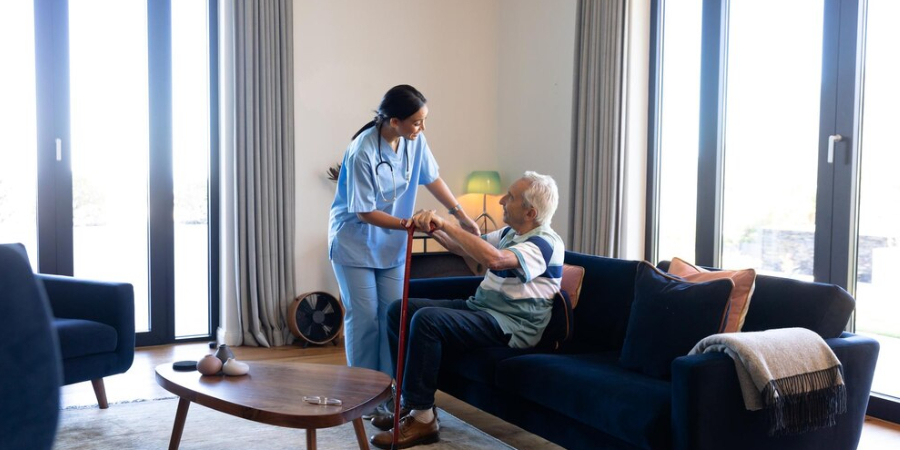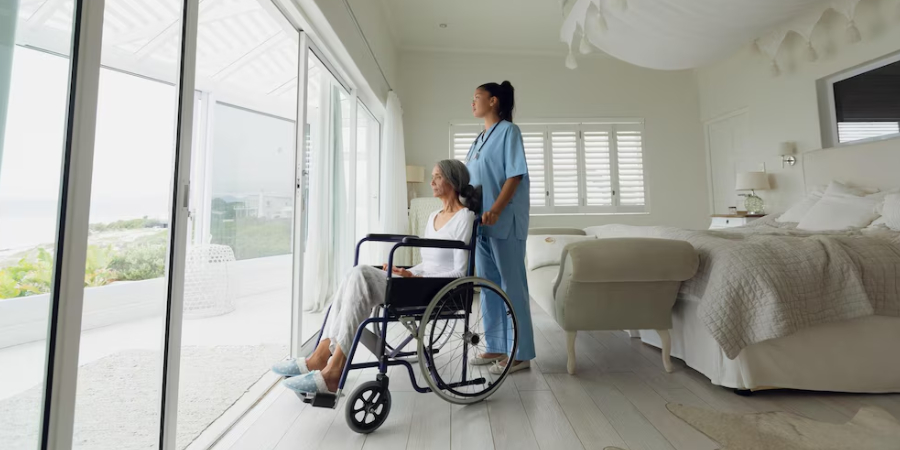The National Disability Insurance Scheme (NDIS) supports people with disabilities, helping them live independently. It can also cover a participant’s accommodation and daily care needs. These usually fall under NDIS Supported Independent Living (SIL) and Specialist Disability Accommodation (SDA). While they may seem similar, their purpose is completely different.
This blog will cover the key differences between SIL and SDA. Gaining this clarity can empower people with disabilities and their families to choose an option that best meets their needs. So, let’s compare them based on features, purpose, and eligibility.

Supported independent living under the NDIS is a tailored support that helps participants live as independently as possible in the community. It is generally available for those who require round-the-clock care and typically live in a shared accommodation arrangement. However, a person can get assistance at home as well.
Here are a few important features of NDIS SIL:
If a participant has a change in living circumstances or wants to explore different home options, SIL can help. It provides access to various housing types within the general community. That being said, the SIL funding will not cover the cost of rent and utilities.
SIL also provides individuals with day-to-day living supports for tasks they might find difficult to perform. For example, self-care, cooking, cleaning, transport, shopping, managing finances, and attending health appointments.
The support provided under the NDIS Supported Independent Living can be adapted to each individual’s goals and evolving needs. This personalised approach helps them live life on their own terms.
Supported independent living offers practical support that builds independence and confidence in daily life. Depending on individual needs, this can include:
SIL accommodations come in various forms. The options mainly aim to provide a tailored service that suits individual requirements. Participants can access SIL from disability care providers in any of the following ways:
In this scenario, residents share a home or apartment and access to support staff to assist with their needs. This setup allows participants to live in a family-like environment with constant support. Staying in community housing encourages communication and the development of social skills among occupants.
Some participants prefer to live in their own homes while receiving the necessary support. This type of NDIS SIL arrangement offers maximum freedom and privacy.

Some individuals with disabilities have high support needs to live in specialised homes. This is where NDIS Specialist Disability Accommodation, or SDA, steps in. It provides a range of housing facilities to participants who require fully accessible accommodation due to physical disability or complex behaviours. These homes focus on the individual’s comfort and safety.
Some key aspects of this support include:
SDA homes are specifically designed to meet the needs of participants requiring significant on-site support. For example, bathrooms and kitchens have features that make daily tasks easier. These can be lower sinks, walk-in showers, grab bars, and adjustable countertops.
Specialist disability accommodation also has several modifications integrated into the layout. These may include wheelchair access, hoists, sensory rooms, and other assistive technology.
Safety features in SDA houses contribute to a better quality of life. Anti-slip flooring, emergency alarms, and well-lit entrances are a few elements that reduce the risk of accidents.
There are quite a few distinct differences between SIL and SDA. For newcomers, it may be challenging to understand these nuances. The table below highlights the major differences between SIL and SDA to help you understand them better:
| Feature | Supported Independent Living | Specialist Disability Accommodation |
|---|---|---|
| Purpose | Helps people live independently in a shared or individual living arrangement | Provides accommodation facilities to those who can’t live alone |
| What Does It Cover? | Cost of support workers’ assistance for personal care, household chores, and transport | Cost of housing |
| Does Not Include | Rent, groceries, and utilities | Support workers or daily living assistance |
| Eligibility |
|
|
| Living Arrangements | Shared housing, group homes, or individual homes | Purpose-built homes with high accessibility features |
Some individuals with disabilities may qualify for both SIL and SDA funding. They can get funds for daily living support while living in fully accessible homes. However, it’s best to have separate funding for these supports. Doing so will allow you to change supports without leaving your SDA-funded accommodation.
The decision between SIL and SDA depends on a participant’s unique support needs, goals, and circumstances. Here are some key factors to determine if SDA is the right fit for you:
On the contrary, NDIS SIL may be the right option if you:

SEWA Victoria is a trusted provider of NDIS Supported Independent Living services across Melbourne. Our team empowers individuals with disabilities through personalised assistance. We can help with household chores, meal preparation, personal care, and community participation. The aim is to support participants in developing essential skills for a better quality of life.
If you or your loved one needs a comfortable living environment, our team can help. We are one of the leading disability care providers with years of experience. Rest assured that we’ll keep your needs a top priority. To book an appointment with us, call us on 0451 624 133 or 0416 610 034. Alternatively, you can also write to us at info@sewavictoria.com.au.
Latest Posts
Archives